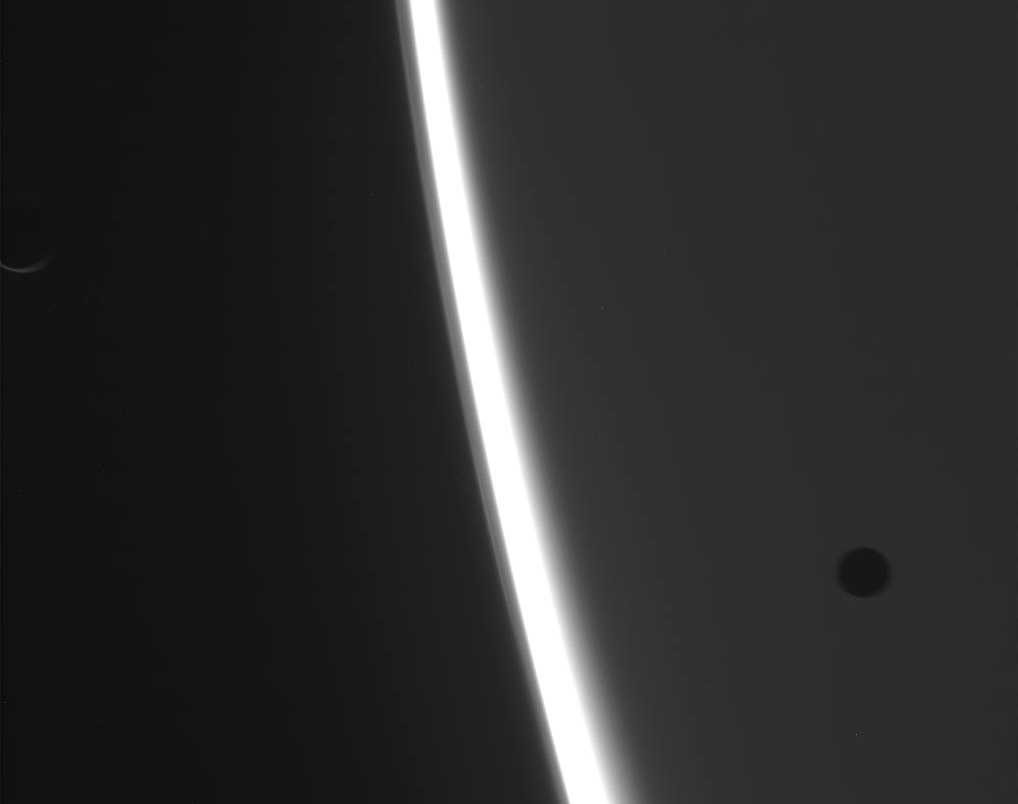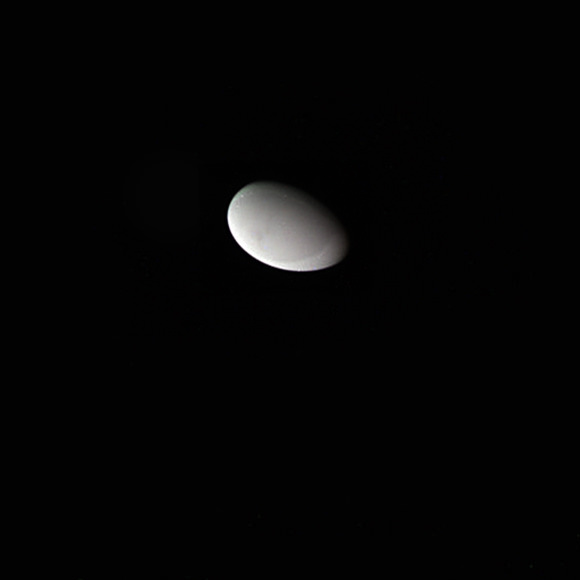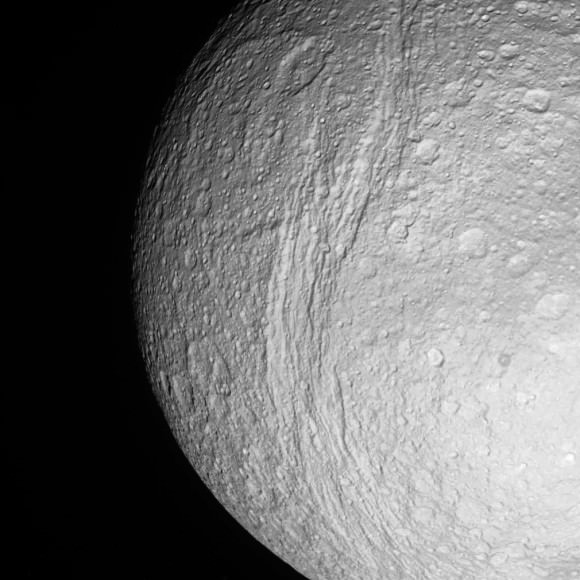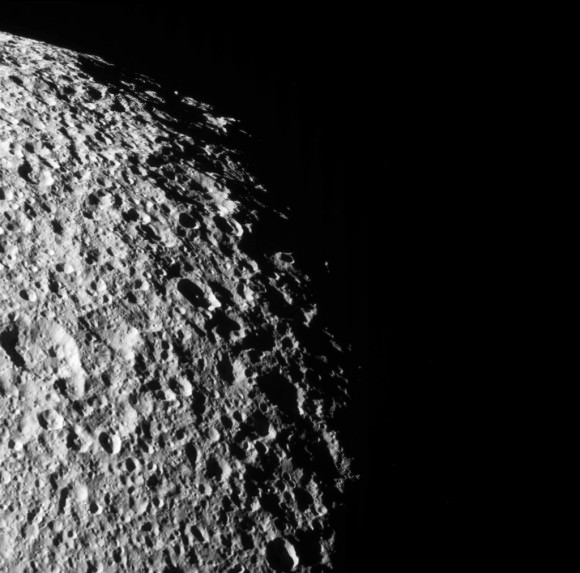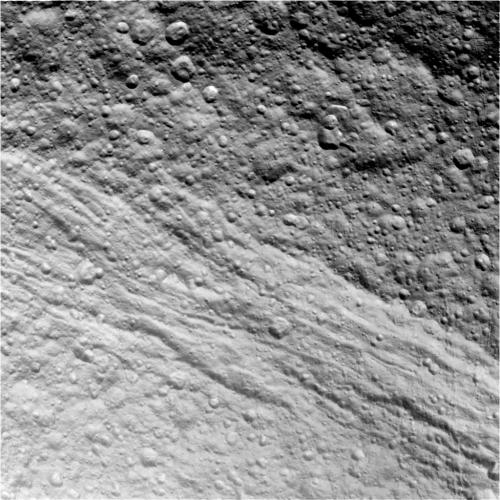On March 11, NASA’s Cassini spacecraft was acquiring some images of Saturn’s back-lit limb when two of its moons decided to make an entrance. Like stage hands in a darkened theatre the moons quickly passed across the scene, moving between Saturn and the spacecraft and, because of exposure time and spacecraft motion, getting a bit blurred in the process.
In the image above the silhouette of one moon can be seen at bottom right — Mimas, perhaps — while another’s crescent can be made out at upper left… possibly Enceladus. Very cool!
Watch an animation of the moons below:
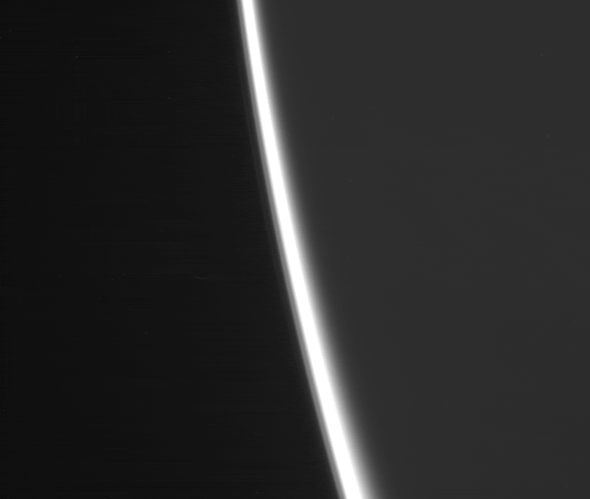
While I admit I’m not 100% sure which moons these are, based on their apparent shapes, positions, and relative sizes I’d make my guess that these are 318-mile (511-km) -wide Enceladus and the 246-mile (395-km) -wide Mimas.
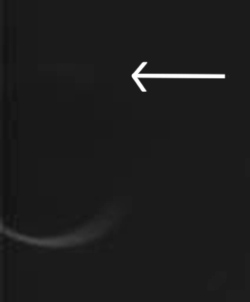
Cassini was 843,762 miles (1,357,903 km) from Saturn when the images were acquired. And, if the larger moon at left is Enceladus, I’m thinking south in these images is up based on the barely-perceptible presence of a lighter area along its top edge that could be icy spray from its southern geysers. (See enlarged detail at right.)
Saturn, of course, is on the right. A small segment of the bright arc of its backlit limb is what’s running diagonally down across the image.
These images have not yet been calibrated or cataloged by NASA or the Cassini team.
See the latest raw images from Cassini on JPL’s mission page here.
*I say “dark moons” but actually Enceladus and Mimas are pretty bright, both being composed of a lot of ice. Enceladus is actually the most reflective world in the Solar System!

